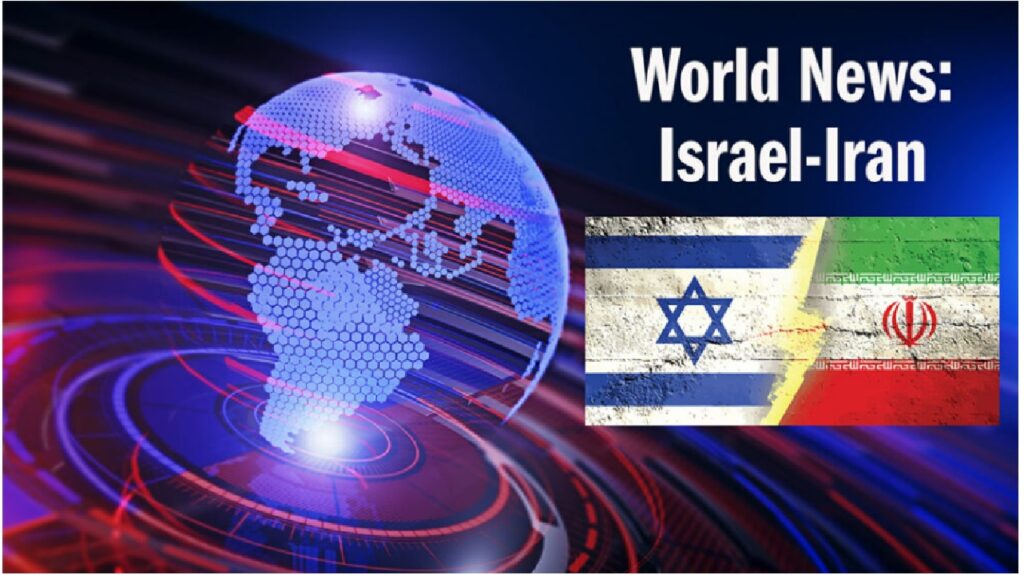Author: Akshay Published Date: June 14, 2025
1. Operation Rising Lion Ignites Regional Tinderbox
Tensions between Israel and Iran have exploded into their most dangerous confrontation yet. Israel’s “Operation Rising Lion” struck over 100 Iranian targets last Friday—including military command centers and nuclear facilities in Tehran and Natanz—using airstrikes, drones, and alleged covert ops. Iran retaliated with missile and drone volleys, some breaching Israeli defenses before interception.
Prime Minister Netanyahu called it a “decisive move against existential threats,” while Tehran condemned the strikes as a “grave escalation,” reporting dozens of military and civilian casualties.
(Sources: reuters.com, theguardian.com)
2. Strait of Hormuz: The Oil Chokepoint
All eyes are on the Strait of Hormuz—the artery for 20% of global oil and gas. Fears of disruption sent Brent crude prices soaring past $78/barrel, spiking 7% in a single day.
For India (importing 80% of its crude), this is an economic gut punch:
- Threatens inflation and weakens the rupee
- Widens India’s current account deficit
- Could delay RBI rate cuts
JPMorgan warns prices could hit $120/barrel if conflict widens.
(Sources: marketwatch.com, m.economictimes.com, timesofindia.indiatimes.com)
3. India’s Diplomatic Tightrope Walk
New Delhi urged “maximum restraint” from both nations, stressing its “friendly ties with Iran and Israel.” The delicate balancing act continues:
- Netanyahu personally briefed PM Modi on security concerns
- Israel’s ambassador hinted at India’s potential mediation role
- MEA quietly coordinates with Gulf partners to prevent spillover
(Sources: indiatoday. in, ft.com, ndtv.com)
4. Stranded Citizens & Students
Safety advisories flooded Indian phones in Tehran and Tel Aviv:
- “Avoid non-essential travel.”
- “Register with embassies”
- “Follow local alerts.”
Jammu & Kashmir’s CM urgently requested the evacuation of Kashmiri students in Iran.
(Sources: indianexpress.com, economictimes.indiatimes.com)
5. Flight Chaos Ripples Globally
Iran’s closed airspace triggered aviation chaos:
✈️ Air India canceled/rerouted 16 flights
✈️ Europe/Middle East flights now take longer routes
✈️ Higher fares and cargo delays hit trade and tourism
With Pakistani and Afghan airspace also restricted, alternatives are costly.
(Source: timesofindia.indiatimes.com)
6. Economic Domino Effect
Beyond petrol pumps, the oil shock threatens:
⚠️ Manufacturing: Input costs surge for plastics, paints, electronics
⚠️ Rupee: Nears ₹86/USD, worsening trade deficits
⚠️ Inflation: RBI rate cuts likely delayed
Crisil analysts warn of “supply chain scrambling” if hostilities persist.
(Source: m.economictimes.com)
7. India’s Strategic Dilemma
Israel Ties
- Top defense partner (40% of India’s arms imports)
- Joint missile systems and intel-sharing
Iran Stakes
- Chabahar Port lifeline to Central Asia
- INSTC trade corridor
- Historic energy partnership
“Walking this tightrope just got harder,” admits a South Block official.
(Sources: ft.com, en.wikipedia.org)
8. Can India Play Peacemaker?
New Delhi’s unique position offers leverage:
- Trusted by Arab states, Israel, and Iran
- UNSC non-permanent member status
- Proven crisis diplomacy (Ukraine evacuations, Gaza mediation)
The MEA explores backchannel talks while preparing evacuation contingencies.
9. How Long Will This Last?
Limited conflict?
- Iran unlikely to blockade Hormuz (triggers global war)
- U.S./Gulf pressure may contain escalation
Worst-case
- Stalemate could mean weeks of volatility
- $120 oil “possible if U.S. naval forces engage” (JPMorgan)
(Sources: marketwatch.com, theguardian.com)
10. India’s Action Plan
| Priority | Critical Steps |
|---|---|
| Oil Security | Accelerate reserves buildup; diversify to U.S./Russian crude |
| Rupee Defense | Deploy RBI forex buffers; stabilize currency markets |
| Citizen Safety | Evacuate students; charter emergency flights |
| Diplomatic Push | Lead UN de-escalation calls; coordinate with China/Russia |
| Economic Armor | Preempt inflation with subsidies; secure alternative supply chains |
Final Analysis
This isn’t just another Middle East flare-up—it’s a global economic and security inflection point. For India, the stakes span energy security, citizen safety, and hard-won strategic partnerships.
New Delhi must now leverage diplomatic agility, economic preparedness, and humanitarian resolve. In a region where sparks turn to wildfires overnight, India’s calm leadership could prove decisive.
